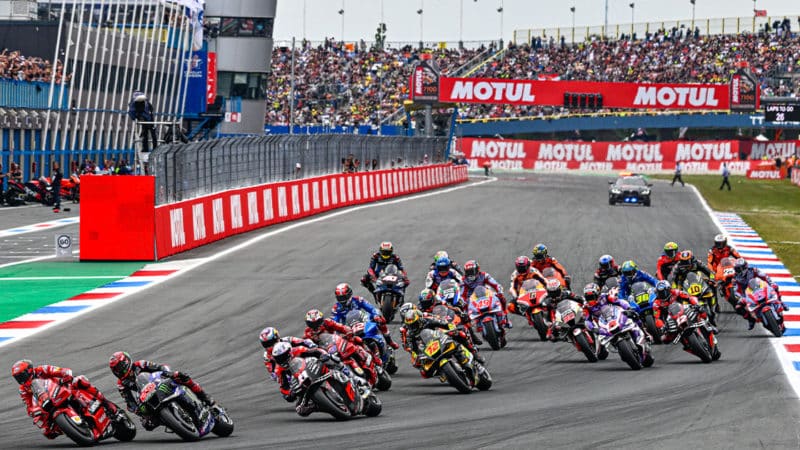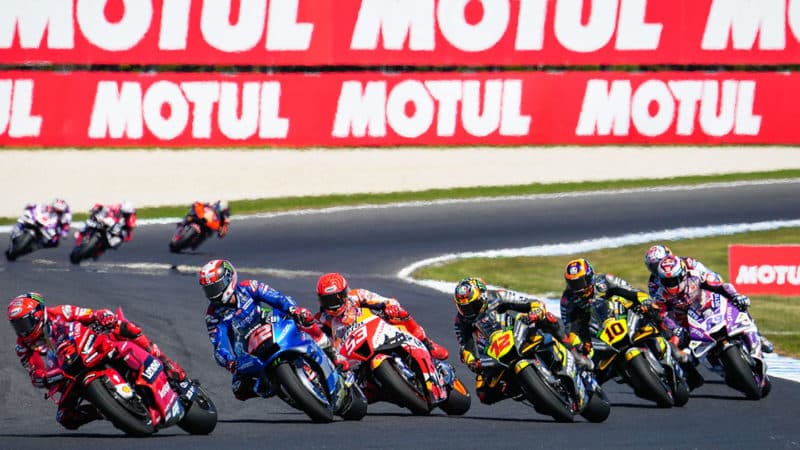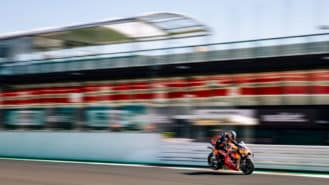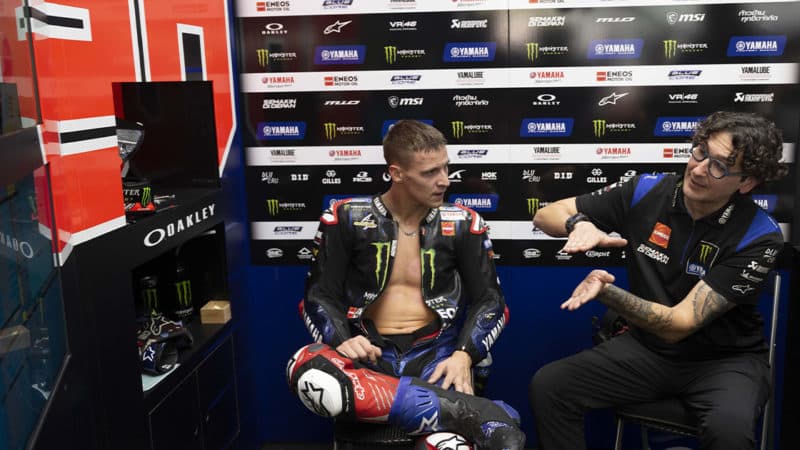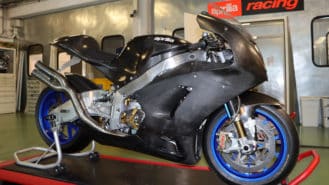“In the brake points the bikes are also very, very stable with the aerodynamics. When you are braking in a straight line and you start to go into the corner, you need to release the brakes quite a lot because with the aerodynamics the g-force is in a straight line. This makes a difference in riding styles but it also makes everything closer, over a single lap. And in races, when you see one rider catch another it’s so difficult to overtake.”
KTM’s MotoGP project leader Sebastian Risse agrees. He believes that the latest downforce aero makes it harder to overtake for various reasons, not least because the wake created by bikes armed with this aero causes riders to lose downforce and therefore grip when they get close to rivals.
“It’s getting a bit tricky because all the aero can limit how aggressively a rider can ride when he’s with other riders,” says Risse.
Andrea Dovizioso, who retired from MotoGP last September after 15 years and 15 victories in the class of kings, also believes that the championship is going in the wrong direction, just like Formula 1 many years ago, with fast-accelerating technology overriding rider talent.
“It depends on what the championship wants,” says the 36-year-old. “If the championship wants more battles, more fights, then, yes, it’s gone too far but it’s normal to arrive in this situation, because it’s related to technical development. The championship needs to decide which way it wants to go.”
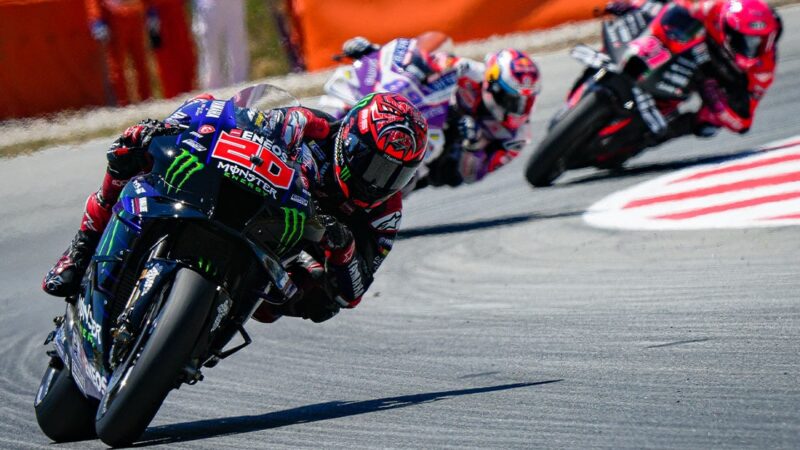
Fabio Quartararo led every lap at Barcelona, while Jorge Martin and Aleix Espargaro swapped second place on four occasions
Dorna
Tyre temperature and pressure also play a part in creating processional races. MotoGP’s current front slick has been so overloaded by downforce aero, ride-height devices, more top speed and better brakes that its temperature and pressure can reach unsustainable levels, which prevent riders from attacking and overtaking.
In other words, someone needs to take a long, hard look at MotoGP’s current technical regulations if the championship is to regain its reputation as the most thrilling motor sport of them all.
